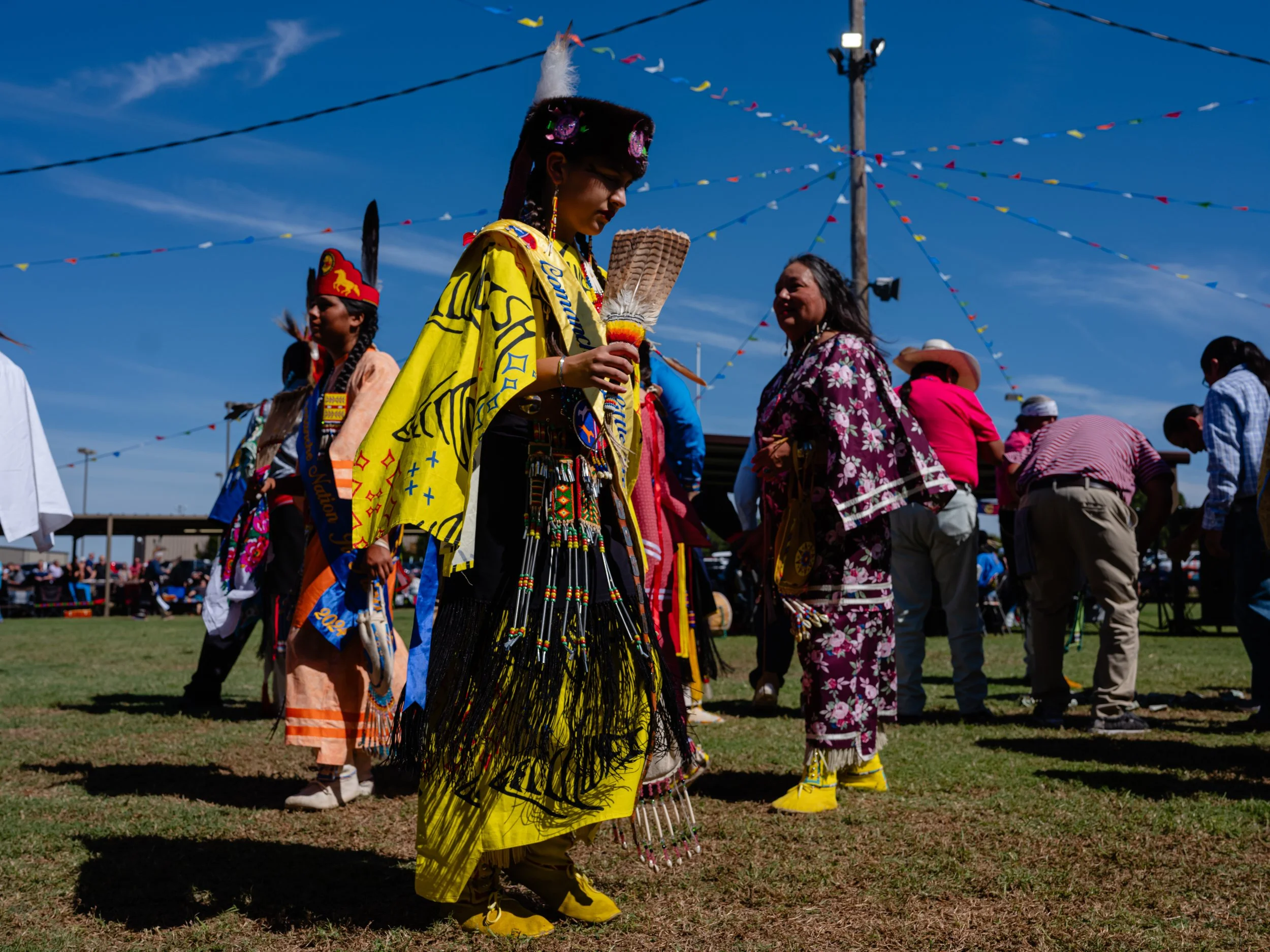Essay and photographs by Jon Cherry
The Comanche Nation Fair is held every September at the tribal headquarters in Lawton, Oklahoma, and was first initiated in 1991 by then-Chairman Wallace Coffey to bring joy and a sense of community back to the tribe. In the parade proceeding to the dance grounds, 25-year-old Tyler Johnson, dressed in an outfit lined with bustles adorned in dayglo- dyed feathers, jaunted and waved at spectators. In front of him, an Indian motorcycle club. Behind, a truck with kids throwing candy to the crowd lining the road. As the parade moved, Johnson broke into what he said was a war dance. “The medicine makes us dance,” he explained. “Medicine is enjoyment. It’s whatever catches your attention, whatever helps you put on a show to show your moves. Every dancer is different.”
As we arrived at the dance grounds, colorful flags fluttered above the arena where all the dancers, draped in glittering furs, feathers, and technicolor designs moved in time to the drumbeats and song. Corey Chasenah sat under a plastic canopy, polishing a large metal button on his leather dance belt. The 24-year-old gourd dancer from Carnegie, Oklahoma, travels for powwows often and makes a good living from the art. For him, singing and dancing is therapeutic. “Medicine is what we get from the Earth; it is what wards off bad energy and negative mindsets,” he said. “Not many in my generation are serious about culture like we are. I want to be someone that other young people look up to.” Later, I met a young man who beamed with pride as he held a staff topped with a taxidermied Bald Eagle and smiled for my camera.
As the sun began its descent over the Ferris wheel, the grassy field west of the fairgrounds, once green, was now brown and flat from the many footsteps that had passed over it. A wooden flute played pop melodies over a backing track during a break in the dancing, a curious mix of old and new. Everywhere at the fair, the spiritual gravity of the past seemed to be juxtaposed against the joyful celebration of the present and the festive atmosphere of the event. At the heart of this tension lies a question: how can a people maintain their sacred connections in a world that increasingly seeks to commodify and modernize those very practices? The powwow itself, a relatively modern, multi-tribal gathering, introduces elements of competition and spectacle. It’s an event to celebrate culture but also to attract tourists.
This event serves as a reminder of a time when the nomadic Comanches controlled the largest landmass in North America. Today, their 17,000 enrolled members primarily live in the counties surrounding Lawton. As night fell, the camps surrounding the fairgrounds grew larger, filled with family members from those surrounding communities, gathering in preparation for the evening dances. I sipped the last of my root beer float and made my way back to the arena.

